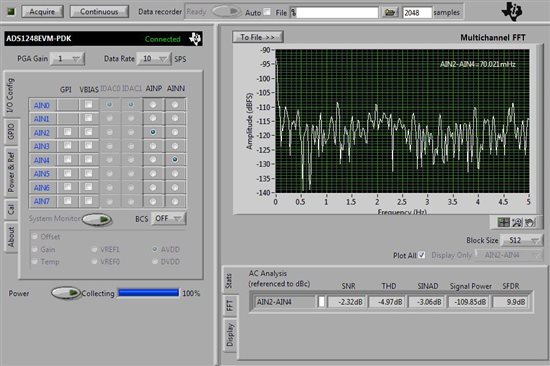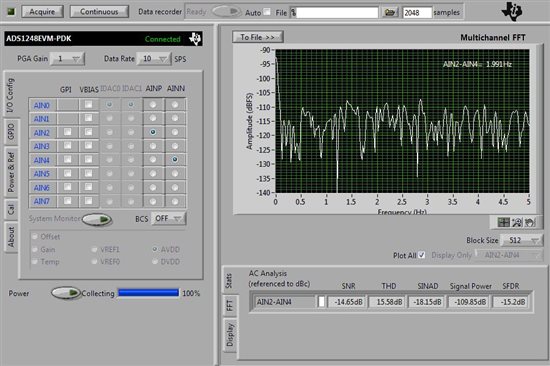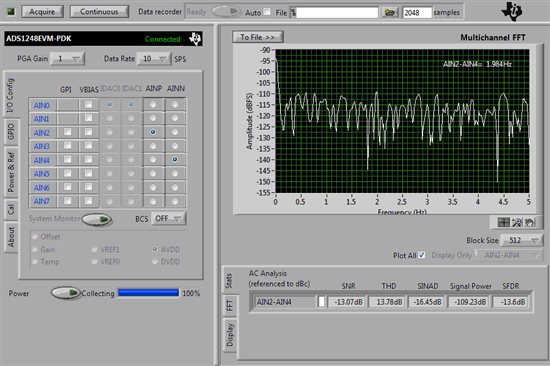For example ADS1248, I tied AINP and AINN together to AN0 , and AN0 to Vc1, read the voltage output Vo1 on ADCPro; then tied AN0 to Vc2, read the voltage output Vo2 on ADCPro. Then got CMRR as bellows.
The test CMRR of ADS1248 is better than datasheet typical value.
|
PGA=1 |
Data Rate=5SPS |
voltage change |
|
|
Vcm |
output(code) |
CMRR(dB) |
|
|
1.6034V |
-1996.17 |
||
|
-1.607 |
-1975.73 |
5.12uV |
115 |
|
PGA=8 |
Data Rate=5SPS |
voltage change |
|
|
Vcm |
output(code) |
CMRR(dB) |
|
|
0.1796V |
-1848.08 |
||
|
-0.2021V |
-1853.77 |
0.174uV |
127dB |
I just want to know whether this test method of CMRR is right? Thank you.





